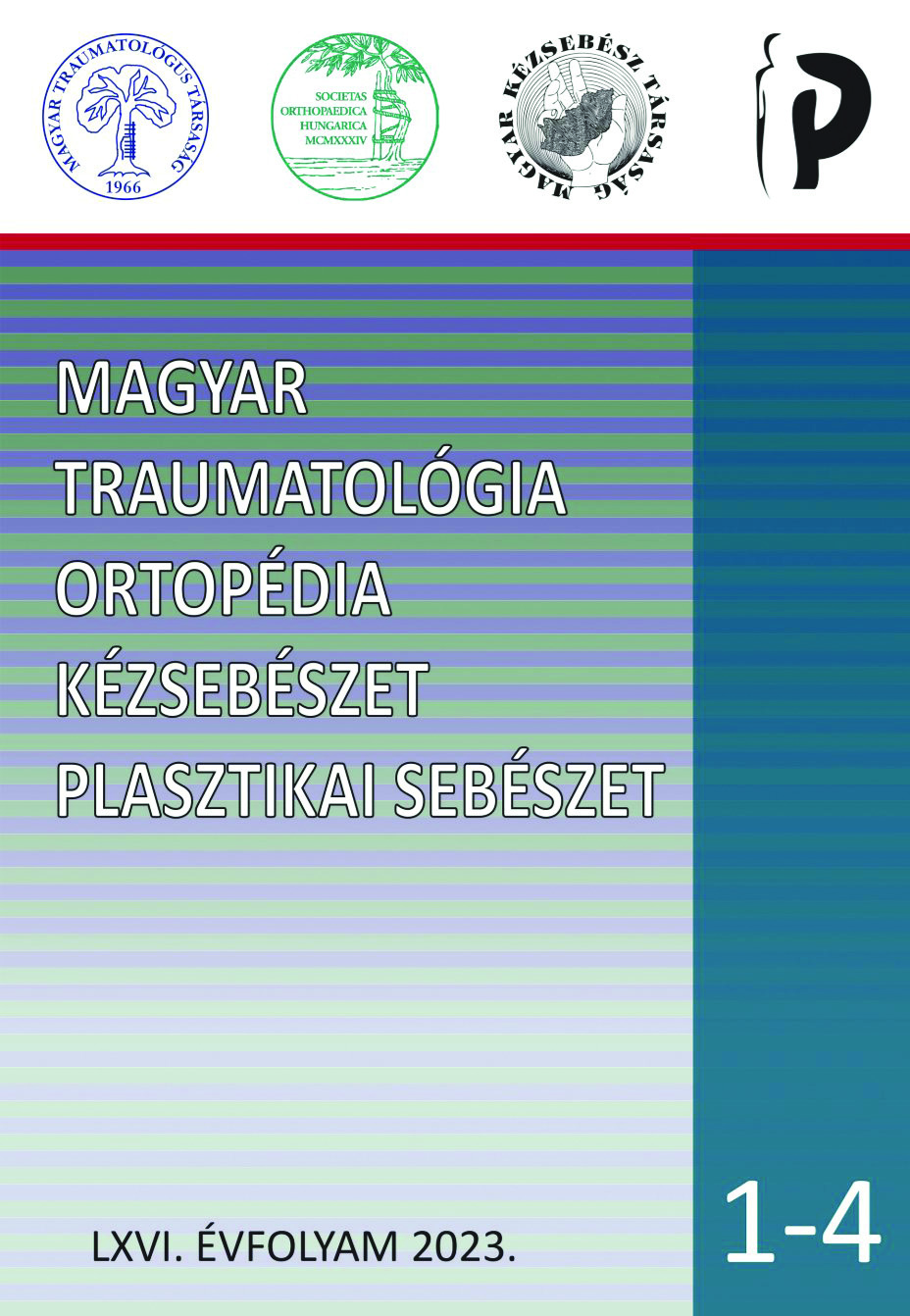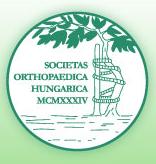Gravis subcutan emphysema a felső végtagon
Esettanulmány
Absztrakt
A Szerzők egy 25 éves nőbeteg poszttraumás felső végtagra és nyaki régióra kiterjedő recidív hajlamú, gravis subcutan emphysemával járó megbetegedését mutatják be. Felvétele napján banális traumát követően bal felső végtagon subcutan emphysema jelentkezett egyéb szisztémás eltérés nélkül. A beteg rapidan romló általános állapota miatt műtét vált szükségessé. Az emphysema kiterjedése fokozatosan nőtt, mielőtt stagnálni, végül regrediálni kezdett volna. Gyógyultan emittálták, az egyhetes kontrollvizsgálaton recidíva, panasz nem került említésre. A páciens emissziót követően egy hónap múlva ismét jelentkezett, ahol az előző alkalomhoz képest proximalisan elhelyezkedő, a bal felső végtag egészére és a nyaki régióra is kiterjedő subcutan emphysema igazolódott. A feltárás, necrectomia ellenére a beteg általános állapota romlani kezdett. Laborértékek szignifikáns eltérést nem mutattak, gázképző kórokozót nem lehetett kimutatni. Kétnaponta sebrevíziók történtek, az operatív és intravénás antibiotikus terápiát nagy áramlású maszkos oxigénterápiával egészítették ki. A beteg általános állapota végül javulni kezdett, sebei reakciómentesen gyógyultak, a subcutan emphysema felszívódott, nem recidivált. Gyógyultan emittálták, kontrollvizsgálatokon megjelent, panasza azóta nincsen.
Hivatkozások
Abdullah M., McWilliams B., Khan S. U.: Reliability of the laboratory risk indicator in necrotising fasciitis (LRINEC) score. Surgeon. 2019. 17. (5): 309-318. https://doi.org/10.1016/j.surge.2018.08.001
Brucato M. P., Patel K., Mgbako O.: Diagnosis of gas gangrene: does a discrepancy exist between the published data and practice. J. Foot Ankle Surg. 2014. 53. (2): 137-140. https://doi.org/10.1053/j.jfas.2013.10.009
Eskes A., Vermeulen H., Lucas C., Ubbink D. T.: Hyperbaric oxygen therapy for treating acute surgical and traumatic wounds. Cochrane Database Syst Rev. 2013. Dec. 16. (12): CD008059 https://doi.org/10.1002/14651858.CD008059.pub3
Filler R. M., Griscom N. T., Pappas A.: Post-traumatic crepitation falsely suggesting gas gangrene. N. Engl. J. Med. 1968. 278. (14): 758-761. https://doi.org/10.1056/NEJM196804042781403
Fox A., Sheick H., Ekwobi C., Ho-Asjoe M.: Benign surgical emphysema of the hand and upper limb: gas is not always gangrene -- a report of two cases. Emerg. Med. J. 2007. 24. (11): 798-799. https://doi.org/10.1136/emj.2007.046755
Gottrup F.: Oxygen, wound healing and the development of infection. Present status. Eur. J. Surg. 2002. 168. (5): 260-263. https://doi.org/10.1002/ejs.43
Korhonen K., Hirn M., Niinikoski J.: Hyperbaric oxygen in the treatment of Fournier's gangrene. Eur. J. Surg. 1998. 164. (4): 251-255. https://doi.org/10.1080/110241598750004463
Leiblein M., Wagner N., Adam E. H., Frank J., Marzi I., Nau C.. Clostridial gas gangrene - A rare but deadly infection: Case series and comparison to other necrotizing soft tissue infections. Orthop. Surg. 2020. 12. (6): 1733-1747. https://doi.org/10.1111/os.12804
Rabiul Islam S. M., Mamman K. G., Pande K. C.: Benign subcutaneous emphysema of the upper limb: A case report. Malays. Orthop. J. 2016. 10. (3): 39-41. https://doi.org/10.5704/MOJ.1611.002
Sarani B., Strong M., Pascual J., Schwab C. W.: Necrotizing fasciitis: current concepts and review of the literature. J. Am. Coll. Surg. 2009. 208. (2): 279-288. https://doi.org/10.1016/j.jamcollsurg.2008.10.032
Tessier J. M., Sanders J., Sartelli M., Ulrych J., De Simone B., Grabowski J., Buckman S., Duane T. M.: Necrotizing soft tissue infections: A focused review of pathophysiology, diagnosis, operative management, antimicrobial therapy, and pediatrics. Surg. Infect. (Larchmt). 2020. 21. (2): 81-93. https://doi.org/10.1089/sur.2019.219
Wong C. H., Khin L. W., Heng K. S., Tan K. C., Low C. O.: The LRINEC (Laboratory Risk Indicator for Necrotizing Fasciitis) score: a tool for distinguishing necrotizing fasciitis from other soft tissue infections. Crit Care Med. 2004. 32. (7): 1535-1541. https://doi.org/10.1097/01.CCM.0000129486.35458.7D











